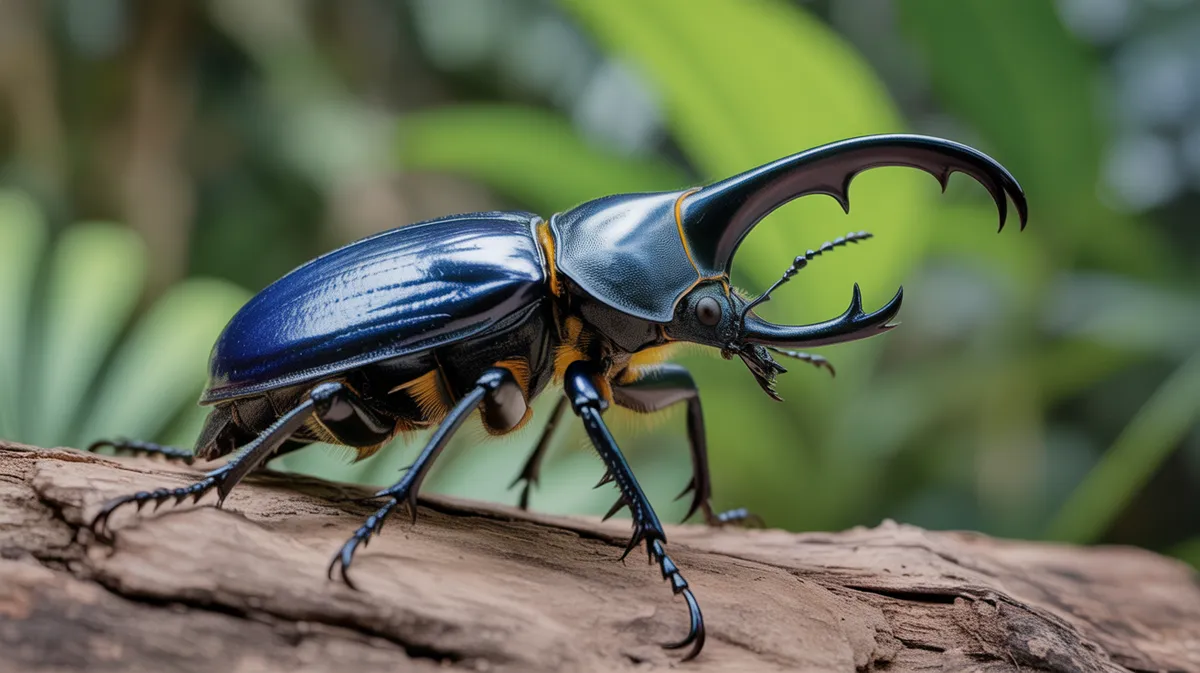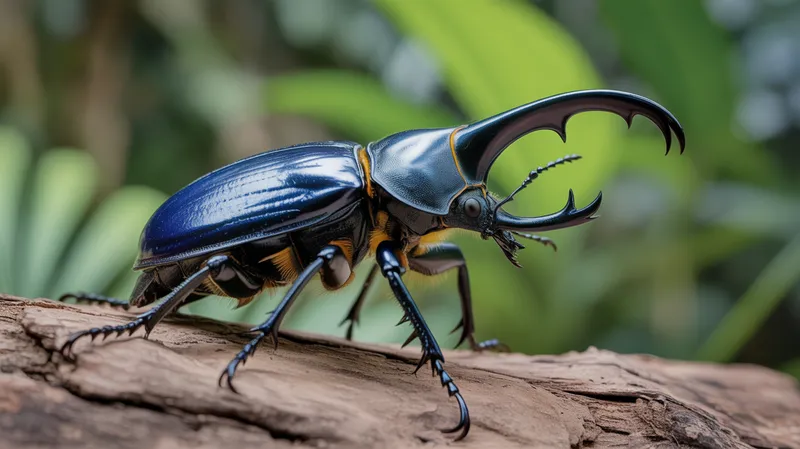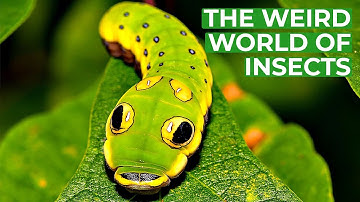
Atlas Beetle
Chalcosoma atlas

Meet the Atlas Beetle
The Atlas Beetle is one of the largest and most impressive beetles in the world, recognized for its three prominent horns on males. Native to the tropical forests of Southeast Asia, this beetle is a member of the rhinoceros beetle group and exhibits strong sexual dimorphism, with males being much larger and more heavily armored than females. The Atlas Beetle spends the majority of its life as a larva, feeding on decaying wood, before emerging as an adult to search for mates. Adult beetles are known for their strength, capable of lifting objects up to several times their own body weight.
Classification
Invertebrate
Habitat
Tropical rainforest
Diet
Herbivore
Lifespan
1-2 years
Conservation
Least Concern
Weight
15-100 grams
📖Fascinating Facts
Horned Warriors
Male Atlas Beetles have three large horns on their head and thorax, which they use to fight other males for territory and mates.
Larval Life
Atlas Beetle larvae spend up to 16 months hidden inside rotting logs, feeding and growing before transforming into adults.
Strength Champions
These beetles are incredibly strong for their size, able to lift objects weighing up to 4 times their own body weight.
📋Detailed Description
The Atlas beetle (Chalcosoma atlas) is a strikingly large scarab beetle, with adult males reaching lengths of 60–130 mm, making it one of the largest beetles globally. Males are easily distinguished by their three prominent thoracic horns: one long central horn on the head and two curved lateral horns on the pronotum, used primarily in combat with rival males. Females lack these horns and are smaller, with more robust, convex bodies. The exoskeleton is glossy, ranging from dark brown to black, sometimes with a metallic sheen. The species exhibits marked sexual dimorphism, not only in size and horn development but also in behavior. Larvae are C-shaped grubs that can weigh up to 100 grams and spend up to 12–18 months developing within decaying wood, feeding voraciously on decomposing plant material. Adults are primarily nocturnal, emerging at dusk to feed and search for mates. Their powerful legs are equipped with sharp tarsal claws, aiding in climbing and gripping bark. Atlas beetles possess strong mandibles for chewing, though adults feed little compared to larvae. Their life span as adults is relatively brief, typically 3–5 months, focused on reproduction.
💡 Did you know?
The Atlas Beetle is named after the Greek titan Atlas, as the males' strength and impressive horns reminded early naturalists of the mythological figure who bore the weight of the sky.
🔬Research & Sources
Wikipedia Summary
The Atlas beetle is a very large species of beetle in the family Scarabaeidae, found in Southeast Asia. Males have three prominent horns. The species is named for Atlas, the giant of Greek mythology who supported the skies.
Last Modified: 12/11/2024
🎭Behavior & Social Structure
Atlas beetles are solitary and largely nocturnal, with activity peaking during the humid, rainy season. Males are highly territorial and engage in aggressive battles using their horns to flip or dislodge rivals from tree trunks or logs, especially when competing for access to females or food sources such as sap flows and rotting fruit. These contests can last several minutes and are physically demanding. Adults are attracted to fermenting fruit and tree sap, which they consume using their strong mandibles. While larvae are detritivores, breaking down woody debris and contributing to nutrient cycling in forest ecosystems, adults are less important as decomposers. There is no evidence of cooperative social structure; interactions are typically antagonistic, especially among males. Adults are capable fliers, using their large membranous hindwings, but are more often found walking or climbing in their dense forest habitats.
👶Reproduction & Life Cycle
Breeding typically coincides with the onset of the rainy season, when humidity and food availability are optimal. Males locate females by following pheromone trails and may fight for mating opportunities. Courtship is brief, and copulation can last up to an hour. Females lay 25–50 eggs in decaying wood or leaf litter, where the larvae will have immediate access to food. The eggs hatch after 2–4 weeks, and the larval stage lasts 12–18 months, depending on temperature and resource availability. Pupation occurs within a self-constructed chamber in the substrate, lasting 1–3 months. There is no parental care; after oviposition, the female leaves the site. Adults emerge synchronously with the rainy season, maximizing reproductive success.
🛡️Adaptations & Survival
Atlas beetles have evolved several notable adaptations. The male’s horns are a classic example of sexual selection, used to physically displace rivals and secure mating rights. Their robust exoskeleton provides protection against predators and desiccation. Larvae possess powerful mandibles for breaking down tough woody material, and their gut microbiota aids in digesting lignocellulose. Adults have strong, hooked tarsi for climbing and gripping bark, and their dark coloration offers camouflage in the dim understory. Nocturnality reduces predation risk and competition for food. The ability to fly allows dispersal to new habitats, though their heavy bodies limit flight range.
📚Research Sources
🎨Cultural Significance
The Atlas beetle is named after the Titan Atlas from Greek mythology, reflecting its impressive size and strength. In several Southeast Asian cultures, large beetles like Chalcosoma atlas are admired for their power and are sometimes used in beetle fighting contests, especially in Thailand and Malaysia. Their formidable appearance has made them popular in insect collections and educational displays. In some regions, beetle larvae are used as animal feed or, rarely, as a food source for humans. The beetle’s image is also used in local art and symbolism, representing strength and resilience.
🔬Recent Research & Discoveries
Recent research has focused on the biomechanics of horn development and function, revealing that horn size is influenced by both genetic and environmental factors, particularly larval nutrition. Studies using micro-CT scanning have elucidated the internal structure of the horns and their mechanical properties. Ongoing research investigates the role of gut microbiota in larval wood digestion and the potential impact of habitat fragmentation on genetic diversity. The species is also used as a model for studying sexual selection and the evolution of exaggerated traits. Conservation genetics studies are underway to monitor population structure across fragmented habitats.
🎥Wildlife Videos

The extraordinary world of beetles
Beetles are one of the most numerous orders of insects. They come in all shapes and sizes. They inhabit a variety of habitats.
Forest Film Studio

Heavyweight Champions | Animal Armory
About Animal Armory: This high-impact limited series reveals animals using their natural weapons and skills to dominate and win ...
Nat Geo Animals

Hercules Beetle Battle | Wild Costa Rica
#NatGeoWILD #Beetles #CostaRica About National Geographic Wild: National Geographic Wild is a place for all things animals ...
Nat Geo Animals

Facts About Beetles - Secret Nature | Beetle Documentary | Natural History Channel
Beetles have been around for over 250 million years. Earth is covered with these amazing insects and now you can learn about ...
Banijay Wild

Tiny Titans - The Fascinating World of Insects | Free Documentary Nature
Tiny Titans - The Fascinating World of Insects | Wildlife Documentary Watch 'Wildlife - Just Insects' here: ...
Free Documentary - Nature

Wildlife - Just Insects | Free Documentary Nature
Wildlife - Episode 5: Just Insects | Wildlife Documentary Watch 'Wildlife - Episode 6' here: https://youtu.be/nfpzQyi9UFU Earth is ...
Free Documentary - Nature
🌍Habitat Information
The Atlas Beetle typically inhabits Tropical rainforest environments. Atlas Beetles have adapted to their environments with specialized features and behaviors.
Primary Habitat:
Tropical rainforest
More detailed habitat information will be available soon.
🛡️Conservation Status
The Atlas Beetle is currently classified as Least Concern. Conservation efforts are crucial for preserving this species for future generations.
Common Threats:
- 🏠Habitat loss and fragmentation
- 🌡️Climate change impacts
- 🎯Hunting and poaching
- 🏭Human-wildlife conflict
⚠️Threats & Conservation Challenges
Currently assessed as Least Concern, Atlas beetle populations remain stable across much of their range. However, localized threats include habitat loss due to deforestation, logging, and conversion of rainforest to agriculture. Collection for the pet trade and as curiosities can impact local populations, particularly where adults are harvested in large numbers. Pesticide use and light pollution may also disrupt breeding and feeding behaviors. Climate change, by altering rainfall patterns and forest composition, poses a long-term threat to their specialized habitat requirements.
🔬Scientific Classification
Scientific Name
Chalcosoma atlas
Classification Hierarchy
🔍 About Taxonomic Classification
Taxonomic classification is a hierarchical system used by scientists to classify and organize living organisms based on shared characteristics and evolutionary relationships.
The system moves from broad categories (Kingdom) to increasingly specific ones, with each animal's scientific name typically consisting of its Genus and species.
📝Community Notes
Share your observations and insights about the Atlas Beetle with our community of wildlife enthusiasts.
Join Our Community
Sign in to share your observations and connect with fellow wildlife enthusiasts.
Sign In to ContributeNo community notes yet
Be the first to share your observations about the Atlas Beetle!
Explore Atlas Beetle
Select a tab above to learn more about this amazing animal.
📸Photo Gallery
No photos available for this animal yet.
🌟Discover More Wildlife
Continue your journey of discovery with more fascinating animals from our database
